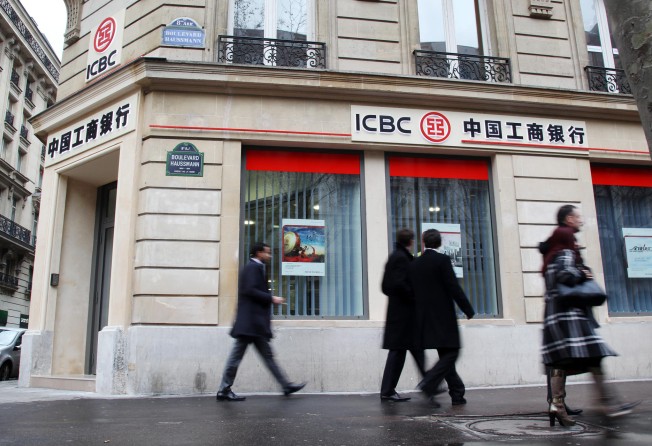China's biggest banks learn to cope with sluggish growth
While the days of double-digit profit gains are over, the key challenge for the mainland's largest lenders is how they deal with mounting bad debt

Slower economy, slower banks - the concept does not defy logic, even on the mainland.
The real question for the mainland's biggest lenders last year was to what degree an economic slowdown had dragged on profits in an industry accustomed to posting double-digit growth.
Even more carefully watched as the banks reported earnings for last year was their recognition of mounting bad debt and how that trend was set to continue this year.
"The main risk for banks right now is asset quality," said Chen Xingyu, an analyst at Phillip Securities. "There was no real surprise on profits."
As was widely expected, profit growth for the mainland's biggest banks decelerated significantly last year.
Most notably, profits at Industrial and Commercial Bank of China, the world's biggest bank by assets, halved between 2013 and 2014. The lender undershot analyst expectations to notch 5 per cent profit growth after logging a more than 10 per cent gain one year earlier.
It is a similar story at ICBC's peers. Bank of China and Agricultural Bank of China both reported about 8 per cent growth, down from above 12 per cent and 14 per cent respectively.
Business has slowed and banks have exited an era when upwards of 12 per cent growth in profits was the norm. This is the "new normal", a term floated by Communist Party boss Xi Jinping and reiterated by the management of the Big Four banks this year as an explanation for slow growth.
The new normal thus far has incorporated monetary easing in the hope that the country's extraordinary economic development does not plummet too far. The People's Bank of China has cut interest rates twice since November and lowered the ratio of reserves banks must set aside.
Easing has been a doubled-edged sword for the banks. On the one hand, cheaper credit means they will make less money on their loans. Net interest margins stayed strong for most of the banks for last year as a whole but came under pressure in the last three months of the year as the rate cuts were priced into loans.
That pressure should increase as loans reprice this year. The central bank is expected to cut rates by another 25 basis points in the first half of the year.
At the same time, the easy money is good for asset quality - at least in the short run. The cheaper the credit, the easier it will be to refinance loans and keep struggling firms afloat for a while longer. This should help banks control bad debts this year.
The average non-performing loan ratio for commercial banks is 1.29 per cent.
If there were surprises in the 2014 reports the Big Four delivered last week, they were the rapid acceleration in bad debts.
Agricultural Bank's NPL ratio jumped to 1.54 per cent from 1.29 per cent in September, leading the sector in asset deterioration.
The better recognition for the higher-than-reported NPL figures was not a bad thing because it signalled banks were dealing with asset deterioration, said Sanford C. Bernstein senior analyst Hou Wei. "It shows the banks are exposing NPLs" as opposed to hiding them, he said.